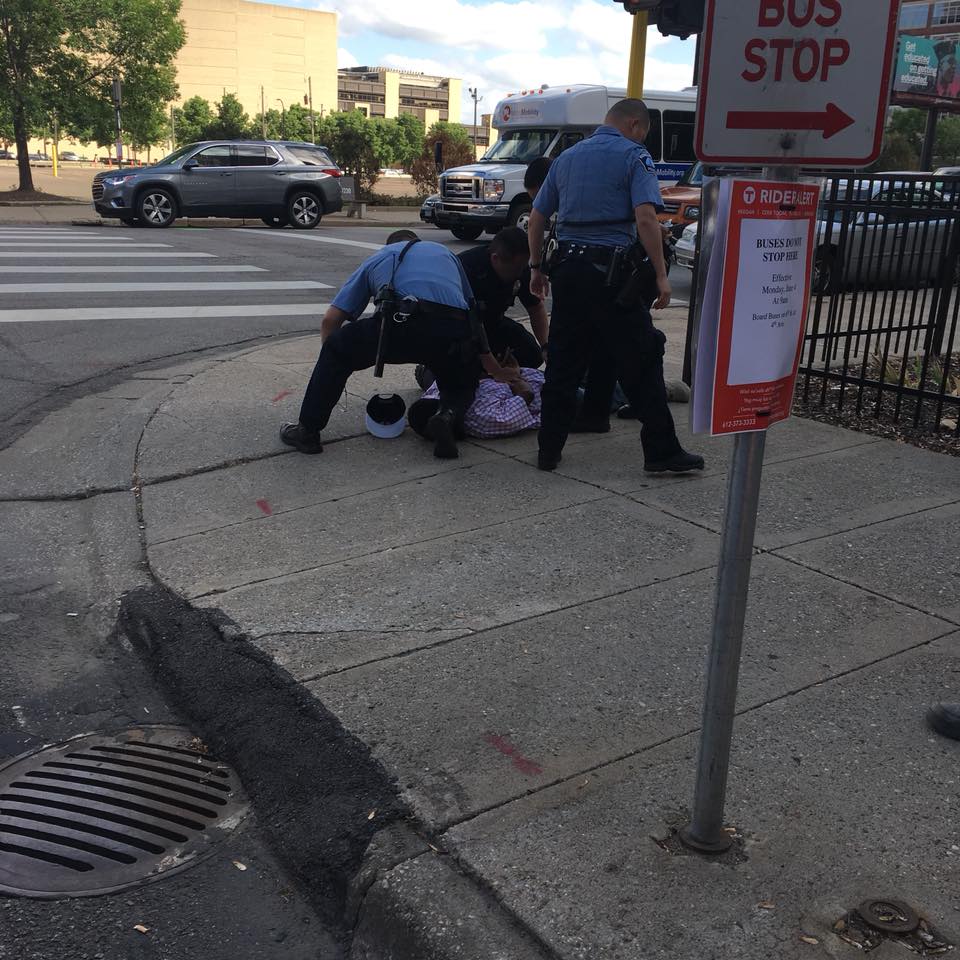Minneapolis
Sometime between 2017 and 2020, I was walking north up Hennepin Avenue at about 5pm. I had just navigated the cluster of citizens who spread out across the sidewalk by Mackenzie’s, jostling me and other pedestrians on a nightly basis, and was stood at 9th Street waiting for a crossing. A young lady, wearing headphones and out for a jog, was stood to my right. About a foot to her right was a man, obviously disturbed and quite probably intoxicated, describing to her, in a very loud voice and in some detail, what he proposed they do together. I stared at the gentleman, but the jogger stared ahead, eyes fixed on the sign, waiting for the light to change, looking for all the world as though nothing unusual was happening.
And, for downtown Minneapolis, maybe it wasn’t, for I have several such stories. There was an almost identical incident on Nicollet Mall while waiting for the bus outside the Walls Fargo building: However unsettling I found these events, it must be worse for the female victims. A surprising number of these tales involve people’s bowel movements, like the occasion I stepped out of the Caribou on Nicollet Mall and had to swerve a jet of urine or the time a woman dropped her pants on the platform of the Nicollet Mall light rail stop at 1pm and defecated. Some involve simple violence, like the time one passenger on the bus I was traveling on lunged at another with a knife.

There are those — the kinds of people who tweet pictures of meals in expensive Minneapolis restaurants as proof that the city is A-OK — who will tell you that all this is overblown. There are others who will acknowledge all this but tell you that it is simply the way things are in cities and that you should stay in Gopher Prairie if you don’t like it. The data show that more and more people have been taking them up on that offer, which is why downtown Minneapolis is a ghost town.
But I lived in London for 29 of my 45 years and know more than your average bear about urban living and this isn’t how it is, or, at least, it isn’t how it needs to be. I rode the Underground in London most days of my life, for example, and had, I think, one violent encounter. My third time riding the Green Line light rail, I had to subdue an intoxicated man who tried to attack two young women and detain him until the cops arrived: When they did, they told him not to do it again and let him go. Perhaps that gives you some indication of why Minneapolis has these problems.
San Fransicko
Minneapolis is not, of course, the only city that has these problems. In recent years, San Francisco has become the avatar of urban decay, as renowned now for ubiquitous piles of human excreta as it once was for its music scene: What a trajectory.
One resident, Michael Shellenberger, was moved to investigate why this had happened. He relates his findings in his fascinating book “San Fransicko,” subtitled “Why Progressives Ruin Cities.” He will be relating them in person at our Fall Briefing at the Omni Viking Lakes Hotel next Friday, some tickets to which are, I gather, still available.
If you are attending, consider this a spoiler alert. In his book, Shellenberger, who describes himself as a “progressive Democrat,” gives six reasons “Why Progressives Ruin Cities”:
They divert funding from homeless shelters to permanent supportive housing, resulting in insufficient shelter space. They defend the right of people they characterize as Victims to camp on sidewalks, in parks, and along highways, as well as to break other laws, including against public drug use and defecation. They intimidate experts, policy makers, and journalists by attacking them as being motivated by a hatred of the poor, of people of color, and the sick, and as causing violence against them. They reduce penalties for shoplifting, drug dealing, and public drug use. They prefer homelessness and incarceration to involuntary hospitalization for the mentally ill and addicted. And their ideology blinds them to the harms of harm reduction, Housing First, and camp-anywhere policies, leading them to misattribute the addiction, untreated mental illness, and homeless crisis to policies and politicians dating back to the 1980s.
A lot of this will be familiar to residents of Minneapolis.
In the city
But this begs the most important question. “To understand why progressives ruin cities,” Shellenberger writes, “we have to understand why they have been able to maintain and increase their political control of them, over the last thirty years, despite the reality on the ground.” Quite so, but I think Shellenberger largely misses the most important part of the explanation: This is what people have voted for. Mary Moriarty has, for example, been an abysmal attorney for Hennepin County, but she ran for that office promising to be an abysmal attorney for Hennepin County and won.
Some final anecdotal thoughts. When I lived in London and we had a problem in my neighborhood of certain gentlemen gathering in a public space, getting drunk, and urinating in front of the shoppers, the local Facebook group was about 80% in favor of the police arresting them. When Mears Park became an encampment in 2020 with, on one notable occasion, a male resident of this encampment following a young lady up the street while masturbating, the local Facebook group was about 80% against the police clearing the camp out. The solution to people masturbating in the streets of the state’s capital city in the middle of the day was, I learned, to abolish capitalism. This is very unscientific, of course, but maybe it, too, gives you some indication of why we have these problems.
Now and then I think back to that jogger at the corner of Nicollet and 9th, pretending everything was perfectly normal while a manic screamed in her face. It seems to encapsulate the last few years in Minnesota.










